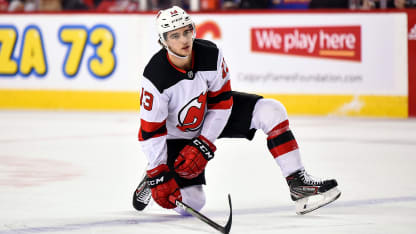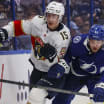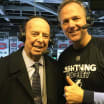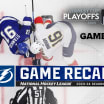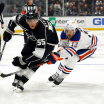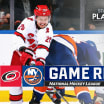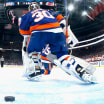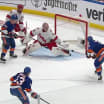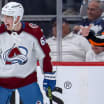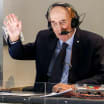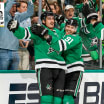Bruins center Charlie Coyle kicked the puck into the zone with his skates but was ruled offside upon video review. Should he have been considered in possession of the puck and therefore onside because he was playing it in his skates?
"I think we're always trying to be progressive and reward offense," Campbell said. "I think our players are much more talented than the players of the past. I can say that because I was one. But these players, the talent they have now, I think we have to take that into consideration with what they can do with the puck on those possession and control plays on the blue line."
The general consensus among the GMs is that the game is healthy, particularly because of the amount of goals and comeback victories.
"The game is in a good place," Arizona Coyotes general manager John Chayka said. "Lots of offense going on. Lots of goals being scored and leads being blown. It's just good to have a discussion about it all."
Many of the statistics released by the League's public relations department Tuesday amplify the feeling the GMs have about the game and the many minor rule changes they've made in recent seasons. In the first quarter of the season, 1,956 goals were scored through 317 games, the second-highest total in the same number of games in the past 23 years (2,007 in 2005-06). There were 140 comeback wins, including 66 third-period comeback wins, the most ever at this stage of a season.
The average length of a regulation game was 148 minutes, the lowest since 2012-13. The NHL and GMs said they feel that number is a direct result of changes made for this season aimed at reducing the number of coach's challenges and stoppages in play.
Adding a minor penalty for all failed coach's challenges has led to a 32 percent decrease in the number of challenges this season (40) from last season (59). The success rate of those challenges is at 58 percent, up from 32 percent last season.
There are also three fewer stoppages leading to a face-off per game, NHL director of officiating Stephen Walkom said, a likely result of goalies freezing fewer pucks on shots from the opposite side of the red line.
The League made a rule change this season prohibiting a team from changing lines if its goalie freezes the puck on a shot from the other side of the red line.
"The GMs made a number of small changes to increase game flow … and it seems to have worked," Walkom said. "The feedback from the GMs has been excellent in that regard."
Chayka said the GMs also feel officiating in the League is strong.
"What I saw was a lot of good calls being made," he said.
That didn't stop the GMs from discussing the rule pertaining to injured players and stoppages (Rule 8.1) and whether there needs to be more clarification given to the officials for stopping play when an injury prevents a player from continuing while the opposing team has the puck.
Officials didn't stop play after Colorado Avalanche forward Matt Calvert was hit in the head by a shot from Vancouver Canucks center Elias Pettersson on Saturday. Calvert was down on the ice, but the officials let the play continue because the Canucks had the puck. They scored on the play.
